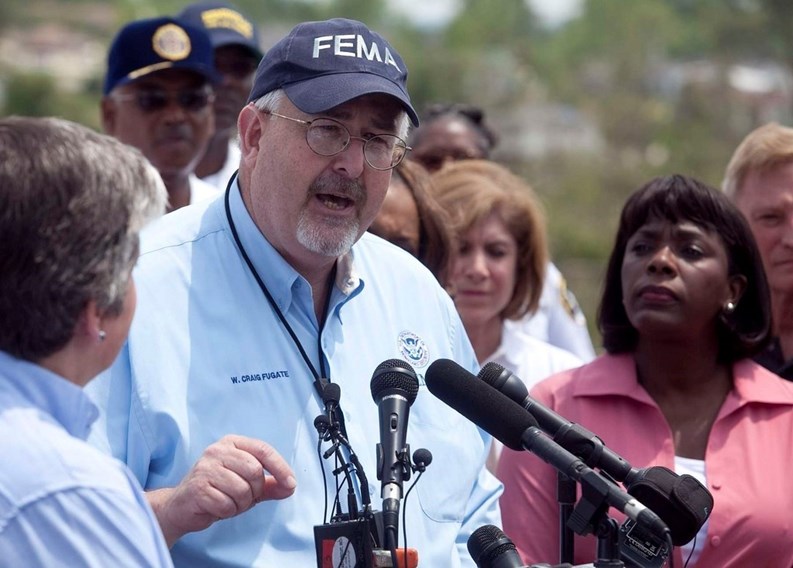When Superstorm Sandy hit the New England states last fall, the U.S. Department of Homeland Security’s Federal Emergency Management Agency (FEMA) was quick to offer federal disaster assistance to the states affected to supplement the local recovery efforts that arose in the storm’s wake.
For example, in the aftermath of Sandy, 12,380 Connecticut residents filed claims with FEMA and over $50 million in aid was approved for disaster relief. In Massachusetts, six counties in the Commonwealth were eligible for federal aid and several counties in Rhode Island also applied for disaster assistance as well. In January, FEMA officials said $6 million had been paid on 1,020 claims made in Rhode Island; it was unclear how many more claims remained to be processed or how much more disaster relief was being sought in the state.
But hurricanes aren’t the only disaster that FEMA funds can help. Tornadoes, floods and even hailstorms can cause enough damage that brings the federal funding into play.
The state of Maine was recently awarded funds by FEMA to supplement state, tribal and local recovery efforts in the area affected by a severe winter storm, snowstorm, and flooding of February 8 to 9. Similarly, Rhode Island, Connecticut and New Hampshire were all designated as disaster areas for the same storm and some federal funding was also available for emergency work.
Daniel T. Vindigni, assistant town manager and director of emergency management for the town of Enfield, Connecticut, explains that disaster assistance is financial or direct assistance to individuals and families whose property has been damaged or destroyed as a result of a federally-declared disaster, and whose losses are not covered by insurance. It is meant to help you with critical expenses that cannot be covered in other ways.
For those who live in condos or homeowner associations, in most cases the types of assistance that FEMA could provide are not necessarily related to costs associated with repairing damages to infrastructure. The program more than likely only applies to individual condo owners and making repairs to the insides of their own units.
According to Scott MacLeod, disaster recovery manager for the Massachusetts Emergency Management Agency (MEMA), FEMA has a number of different disaster assistance programs it can turn on if certain thresholds are met.
“Part of FEMA’s role in that process is to work with local communities as well as impacted residents and businesses to evaluate immediately following a disaster event whether or not those thresholds have the potential to be exceeded to ask FEMA to declare what is called a Major Disaster Declaration,” MacLeod says. “What that means is the President acknowledges and recognizes the ability for the state and the local communities, and in some cases residents and businesses to recover from that event are beyond the capabilities of the states and locals and the FEMA programs can help supplement in the recovery efforts.”
One of those disaster assistance programs that may be turned on is what FEMA calls its Individual Assistance Program (IA), geared towards impacted residential structures like condos that may have been impacted by the event.
“That event could be a flood, tornado or any type of natural hazard,” he says. “With FEMA’s Individual Assistance program, it is not intended to make homeowners whole. It’s not geared towards completely rebuilding a structure that may have been destroyed or completely damaged during the event, it is geared towards meeting the basic needs of those who are impacted.”
The idea of the funds is to ensure the home or business is safe, sanitary and livable. Therefore, FEMA’s grant programs are really limited to replacing hot water heaters, replacing a washer and dryer if flooded and those sorts of things.
Insurance Issues
In a lot of cases, the first questions FEMA will ask before releasing help through its individual assistance program deal with insurance.
“The message we try to push is insurance; both homeowners’ insurance and national flood insurance,” MacLeod says. “This is what most folks need to be focused on. They need to make sure they have adequate insurance coverage before an event happens.”
Bill Jackson, business development manager at J.P. Maguire Associates in Waterbury, Connecticut, which handles disaster restoration for fire and water damage, has worked on a number of condos and HOAs that have experienced natural disasters.
But his company doesn’t work with funds from FEMA; it relies on condos having the proper insurance to cover the repair costs.
“We’re working on a condo right now in Milford that was damaged by flooding due to some of the recent storms in the area,” Jackson says. “We do mitigation work on property damage caused by tornadoes, heavy wind, trees falling down. FEMA doesn’t cover things like this in most places so you need to have insurance and call in a company like ours.”
Help is Out There
One other federal disaster assistance program that may be available for condo owners and homeowner associations may come in the form of low-interest loans from the Small Business Administration (SBA). This can work hand-in-hand with FEMA’s individual assistance program to cover what’s not protected under insurance.
Many people believe that the SBA only helps businesses, but in fact, it has a number of programs for individual homeowners, condo residents and condo associations, and that includes impact from natural disasters as well.
While FEMA’s help comes in the form of a grant, meaning there is no requirement to be paid back, a SBA loan will need to be repaid.
“They are very low, over an extended period of time, so they are much lower than what you would get at a bank or other potential sources,” MacLeod says. “In a lot of cases, their programs can be utilized for homeowners to replace content that may have been damaged and also making improvements to structures that may have been damaged.”
Physical Presence
Aside from giving individuals money, FEMA does enact larger programs depending onn what the situation calls for.
“Depending on the scope and the magnitude of the disaster, it will determine what programs and services FEMA can provide,” MacLeod says. “In a lot of cases, FEMA may also be able to supply supplemental housing assistance that can come in the form of rental assistance, helping to find a temporary place to live. It might be more cost effective to bring in trailers rather than finding adequate housing, especially if so many people are impacted by a natural hazard event.”
When Disaster Hits
At the state level, in Massachusetts, for example, the role of MEMA is to coordinate with FEMA when something happens. Some recent events where FEMA was contacted include the blizzard from early February and of course, coastal storm Sandy.
“Our role is to coordinate with local officials, who in turn will coordinate with local residents to help us get preliminary estimates of damages,” MacLeod says. “That will capture both damages to public infrastructure (roads, bridges, buildings), as well as impact to residences and businesses, like a condo building that was flooded.”
Once the information from all the communities is gathered, it’s evaluated against the thresholds for the federal disaster programs, and a decision is made on whether to bring in FEMA for more assessment, evaluation and quantification of the damage. The governor will make the final call on whether it is warranted.
It is not a fast process in some cases. For the February blizzard, it took four weeks and it could be as much as a few months before the states know whether or not FEMA will be able to provide disaster assistance.
According to a representative at FEMA, any resident of a condo or homeowner association who has a lot of damage and believes they need disaster assistance should apply online at DisasterAssistance.gov, via a smartphone at m.fema.gov or by phone at 800-621-3362.
Financial assistance may also be available to homeowners to repair damage or to replace a home destroyed in a disaster that is not covered by insurance.
Be Prepared
Individuals should never reach out to FEMA directly and should have a plan in place in case something does happen.
If disaster does hit, people should stay informed and monitor the local media and stay in contact with the local public officials for instructions on assistance available and how to register.
FEMA’s website, www.ready.gov, outlines core concepts to consider when preparing for the worst-case scenarios.
Keith Loria is a freelance writer and a frequent contributor to New England Condominium.







Leave a Comment